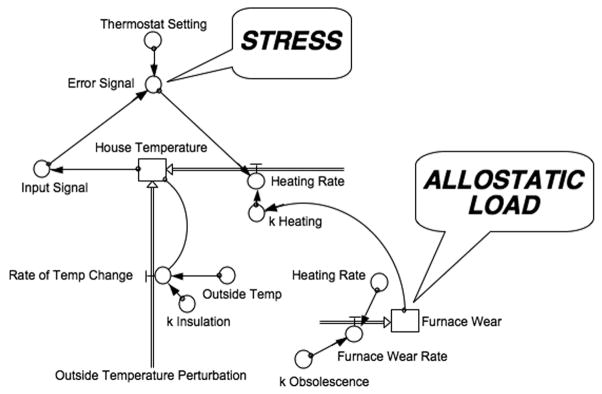Figure 6.
Computer model of a thermostatic system and loci of stress (the Error Signal) and allostatic load. This model is designed to mirror the system for regulating house temperature shown diagrammatically in Figure 5. As outside temperature changes, the house temperature changes, since the insulation is imperfect. The thermostat senses a discrepancy (Error Signal) between the sensed and set temperatures. The Error Signal (corresponding to a state of stress) is a determinant of whether the furnace turns on. Depending on the efficiency of the furnace (k Heating), the house temperature returns toward the set value. The heating rate, along with planned obsolescence, also contributes to wear and tear on the furnace (allostatic load), which in turn decreases the efficiency of the furnace, and the decreased efficiency leads to a greater period of time when the furnace is on. A positive feedback loop ensues, resulting eventually in failure of the system for controlling house temperature.

